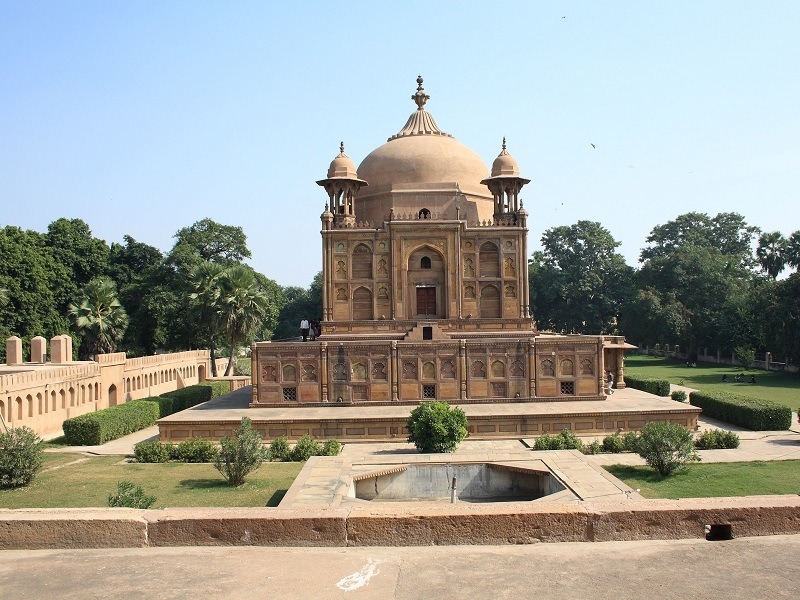Khusro Bagh, Prayagraj - Timings, History, Architecture, Best Time to Visit
 #7 of 22 Places to Visit in Prayagraj
#7 of 22 Places to Visit in Prayagraj
 Distance (From Prayagraj Junction): 1 Kms
Distance (From Prayagraj Junction): 1 Kms
 Trip Duration (Including Travel): 30 Mins - 1 Hr
Trip Duration (Including Travel): 30 Mins - 1 Hr
 Place Location: In Lukarganj Area
Place Location: In Lukarganj Area
 Transportation Options: Cab / Auto
Transportation Options: Cab / Auto
 Travel Tips: None
Travel Tips: None
At a distance of 1 km from Allahabad Railway Station, Khusro Bagh is a large walled garden and burial complex located at the Lukarganj area of Allahabad, Uttar Pradesh. Situated near Allahabad Junction, it is one of the most popular tourist places in Allahabad.
Covering an area of 40 acres, Khusro Bagh is a large quadrangle-shaped walled Mughal garden surrounding three tombs belonging to the family of Emperor Jahangir. This is the burial ground for Prince Khusro- the eldest son of Emperor Jahangir who rebelled against his father when he was only 19 years old, Sultan Begum - Khusrau's mother, a Rajput princess and Jahangir's first wife, and Princess Sultan Nithar Begam, Khusrau's sister. They were buried within this complex in the 17th century.
The three sandstone mausoleums within this walled garden, represent an exquisite example of Mughal architecture. Most of the design of the place is credited to Aqa Reza, an artist on Jehangir's court. This attractive walled garden of Khusro Bagh is entered through a lofty gate with ornate designs and projecting balconies. The tomb of Sultan Begum has a large cenotaph with beautiful Islamic inscriptions carved by Jahangir's best calligrapher, Mir Abdullah Mushkin Qalam. It is believed that Sultan Begum had committed suicide because of the strife between her husband and her son Khusro.
The Tomb of Nithar, Khusro's sister, lies on an elevated platform next to Sultan Begum and is adorned with gorgeous panels and arch motifs. The roofs are decorated with intricate paintings with exceptional concentric patterns and stars, making it architecturally the best of all the three mausoleums. However, Nithar Begum's mausoleum is empty and it does not contain her tomb within it. The tomb of Nithar is said to be built between 1624 and 1625.
The tomb of Khusro is the last of the three tombs. Khusro was first imprisoned within the garden after he rebelled against his father Jahangir. He was killed in an attempt to escape on the orders of Khusro's brother and Jahangir's third son Khurram, who later became Emperor Shah Jahan. The tomb of Khusro was completed in 1622 and is not much of an architectural stand-out. Besides its historic grandeur, the Khusro Bagh is famous for the mango and guava trees that adorn it.
Timings: 6 AM - 7 PM
Entry: Free

























